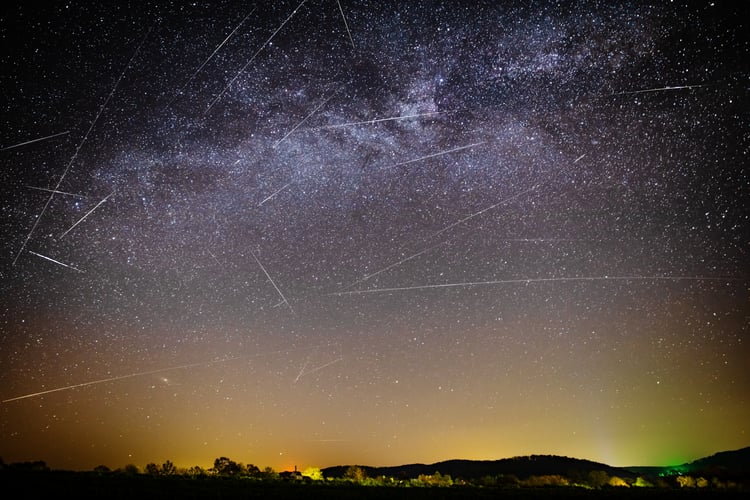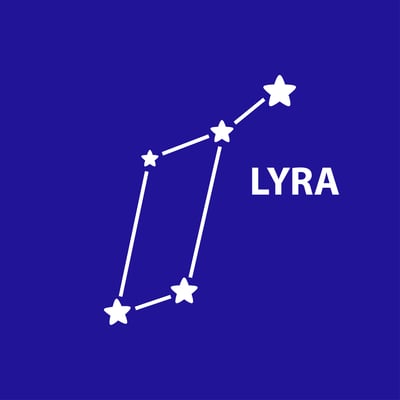Next week is the start of one of the oldest recorded galactic events of the year! The Lyrids meteor shower is one of the oldest known meteor showers on Earth and has been observed for almost 2,700 years. The first recorded sighting dates all the way back to 687 BCE when Chinese astronomers reported, "In the middle of the night, stars fell like rain."

Lyrids Meteor Shower 2020The Lyrids meteor shower occurs every year in April as the Earth passes through the debris trail left behind by Comet (1861 G1) Thatcher. As Earth crosses the comet's path through our solar system, bits of debris left behind by the comet collide with our atmosphere. As these dust particles enter our atmosphere they disintegrate and the friction created through this process leaves fiery streaks in the sky that we refer to as “shooting stars.” Although Comet Thatcher is the source of the Lyrids meteors, it is not the reason for their name. Meteor showers are named after the closest constellation to their radiant, which is the point in the sky from which the meteors appear to come from. This naming system allows for viewers to determine which shower they are viewing on any given night.
In Lyrids case, the radiant is closest to the constellation Lyra, the harp. This constellation is named after the lyre that was once owned by Orpheus in Greek Mythology. The god Apollo gifted the lyre to Orpheus, a musician and poet whose music was said to soothe any savage or bring joy to any heart. However, upon Orpheus’ death, Zeus sent an eagle down to claim the lyre and placed it in the sky. The surrounding area of the constellation Lyra is sometimes depicted as the eagle carrying Lyra into its place. When searching the night sky for the constellation Lyra, it is easiest to first locate Vega, the constellation's brightest star. Vega is the second brightest in the northern hemisphere which allows for easy spotting when observing the Lyrids meteor shower.

The Lyrids meteor shower is known for fast and bright meteors that leave behind an illuminated dust trail that can last for minutes at a time. Around 10-20 Lyrid meteors can occur per hour during the peak. However, unlike other famous meteor showers, the Lyrids peak has a narrow window and does not allow for weeks-long meteor viewing. This year, the predicted peak is 1:06 UTC on April 23 with the best times to watch the Lyrids meteor shower being either late evening April 21 until dawn April 22 or late evening April 22 until dawn April 23. Luckily, this year the new moon falls on April 19, so there will be little moonlight in the sky during the peak of the Lyrid meteor shower allowing for better viewing!
For the best view of the Lyrids meteor shower try and find a spot far away from city and street lights as light pollution will affect the amount of meteors that will be visible. When preparing to view the meteor shower, be patient and allow around 30 minutes for your eyes to adjust to the dark before you might start to see meteors. You’ll want to be cozy when viewing the meteor shower so consider bringing blankets and some hot cocoa to set yourself up to stay outside and see as much of the show as possible. Follow these tips and get outside to make sure you don't miss out on witnessing one of the oldest known meteor showers of the year!







